Recent changes to Google’s user interface have affected the volume and quality of organic website traffic.
For instance, AI Overviews and the commoditized answers Google serves directly in search results mean fewer top-of-funnel clicks reach websites.
There are also fewer clicks for bottom-of-funnel keywords as Google inserts itself in the conversion process. For example, if you look for any product-related search, it’s likely you’ll see features that would typically belong on an ecommerce product category page, like:
- Filters
- Product tiles
- Price information
- Discounts and deals
- Reviews

What’s worse, clicks on these product tiles don’t go to merchants. They open up a panel in Google with multiple sellers, including large marketplaces, instead:
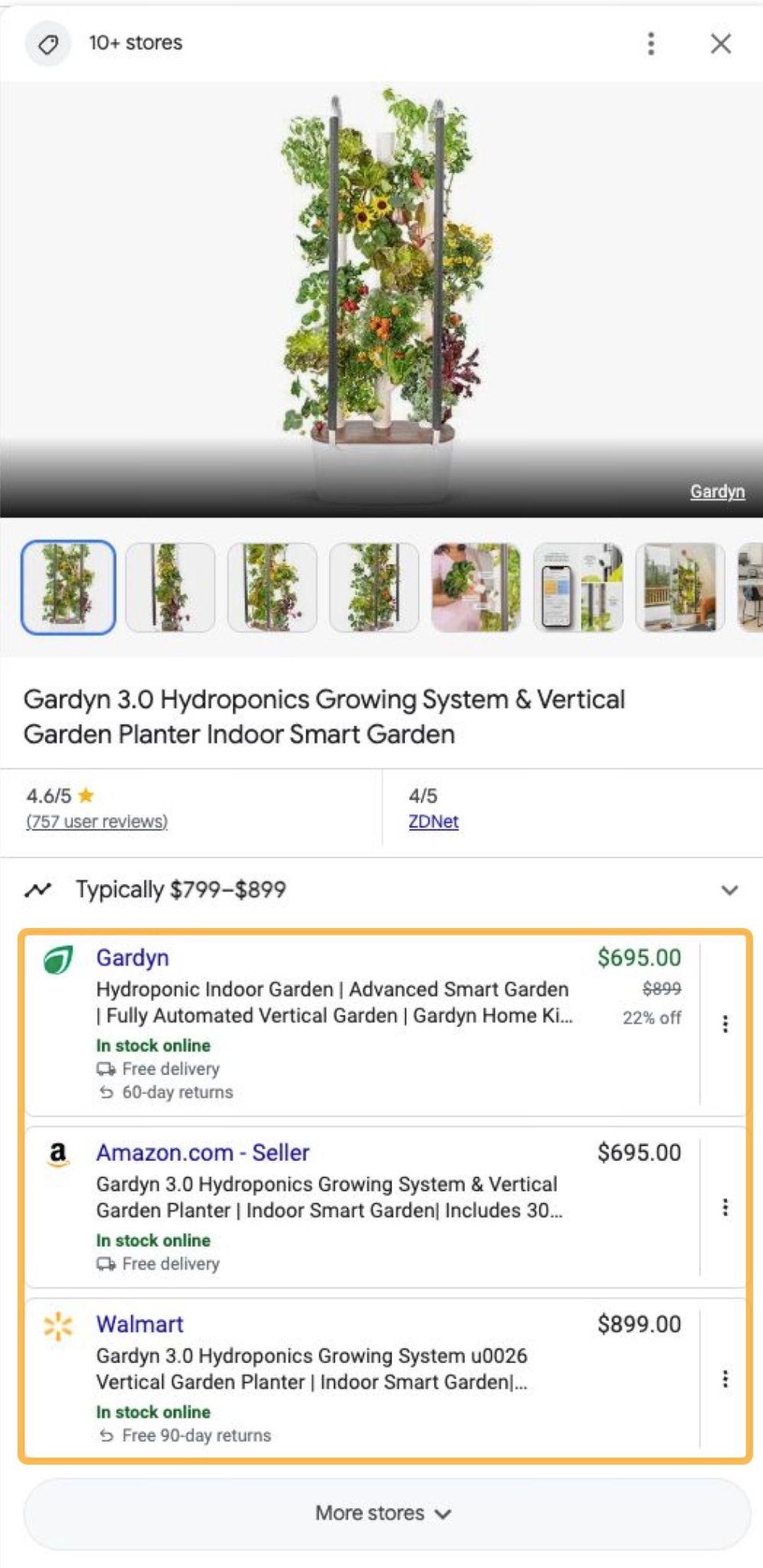
These changes mean that as top-of-funnel and bottom-of-funnel opportunities diminish, the mid-funnel can become your secret SEO weapon instead. I’ll explain how below, but first…
What makes mid-funnel marketing different from top-of-funnel or bottom-of-funnel?
As a quick refresher, top-of-funnel (TOFU) content is educational in nature and fulfills an informational search intent. This content is the furthest from a sale in a typical conversion journey.
Bottom-of-funnel (BOFU) content is the content a user interacts with immediately before a sale. It fulfills a transactional intent and typically consists of sales pages and product landing pages.
Middle-of-funnel (MOFU) content is the murky in-between.
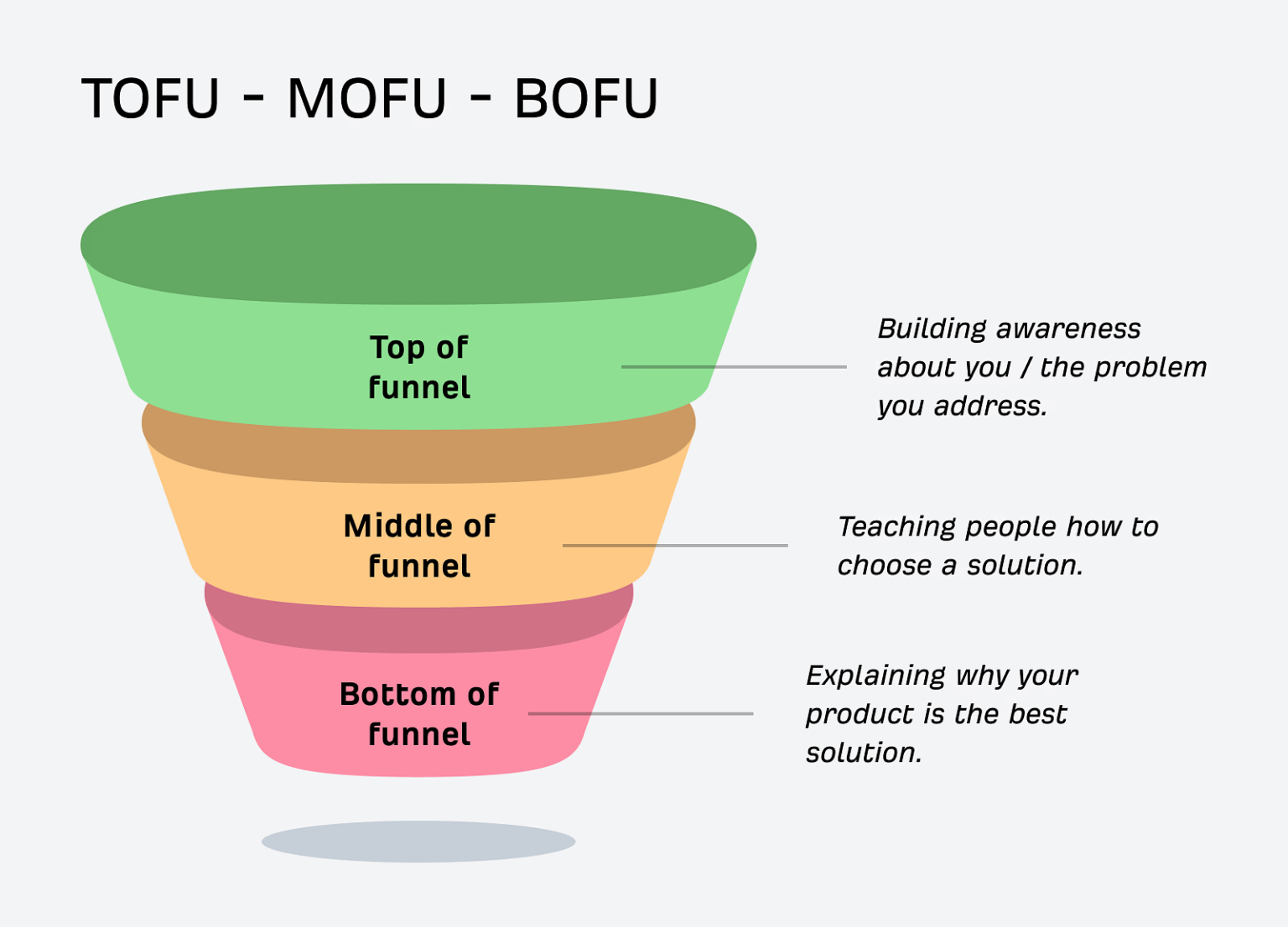
The goals of mid-funnel content are to:
- Transition searchers from being problem-aware to solution-aware
- Help searchers make a decision on the right solution
- Improve brand awareness by increasing your brand’s touchpoints with searchers
- Build trust in your brand so that when folks are ready to buy, they think of you first
It’s also where searchers may prefer information from other humans, not AI. For instance, in the words of Eli Schwartz:
While [Google’s AI] answers could appear on these keywords, the user will potentially still click search results because those answers will not be satisfying enough.
This is why it’s an excellent opportunity for SEO. It’s the type of content that cannot easily be commoditized in many industries, especially B2B.
6 creative mid-funnel content ideas and how to find them
When done well, MOFU content can deliver a higher return on SEO investment than either TOFU or BOFU content.
Here are six ideas that will spice up your strategy and leverage opportunities most other SEOs don’t even consider. I’ve used all of these with great success on client campaigns, especially for B2B brands in narrow verticals.
1. Feature roundups
Roundups are a type of list post. They’re commonly used in affiliate marketing to compare products by different brands for keywords like “best air fryers” or “best wireless headphones.”
Sites like The Wirecutter use such posts as a staple in their content strategies.
However, most affiliate sites only focus on comparing products by different brands, which is why this type of content is underutilized by other businesses, like e-commerce and SaaS brands, that don’t want to feature competing products in their editorial content.
The mid-funnel opportunity for e-commerce and SaaS companies is to think past brand vs. brand comparisons and instead create feature vs. feature or product vs. product roundups.
To find these opportunities, search for your main topic or product category in Keywords Explorer and then apply a filter to include words like:
- Ideas
- Best
- Vs
- And
- Or
- Types
- Alternatives
- Comparison
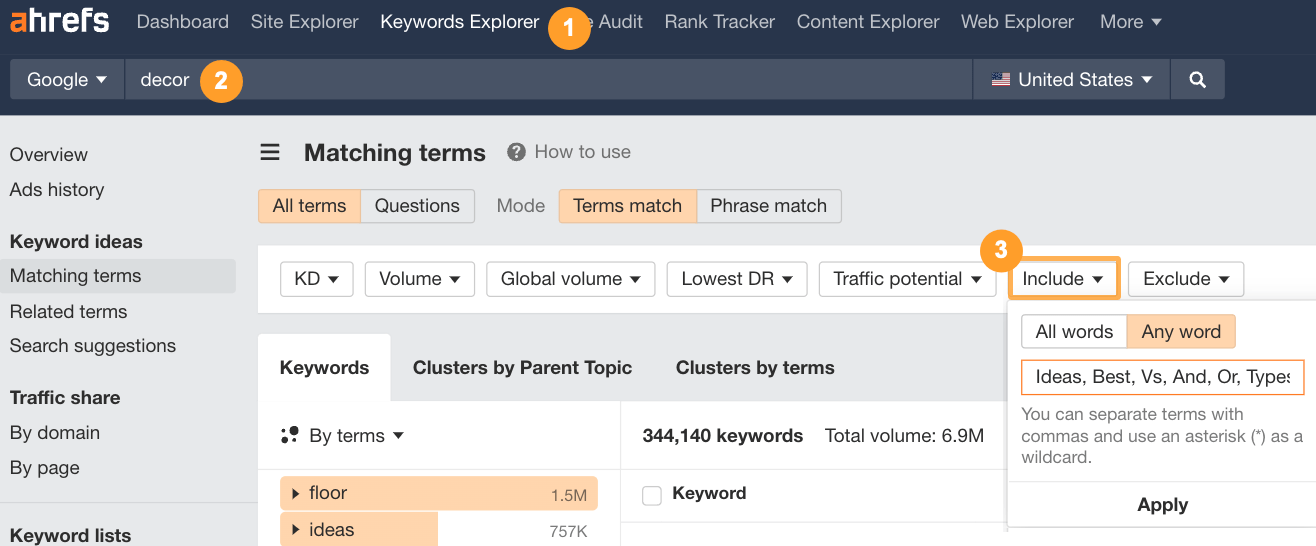
Sidenote.
The exact words that will be relevant to your niche may differ.
Look for opportunities to compare your own products or solutions. For instance, the costume store Fancy Dress has a listicle targeting the keyword “group costume ideas,” and each idea is a product they sell.
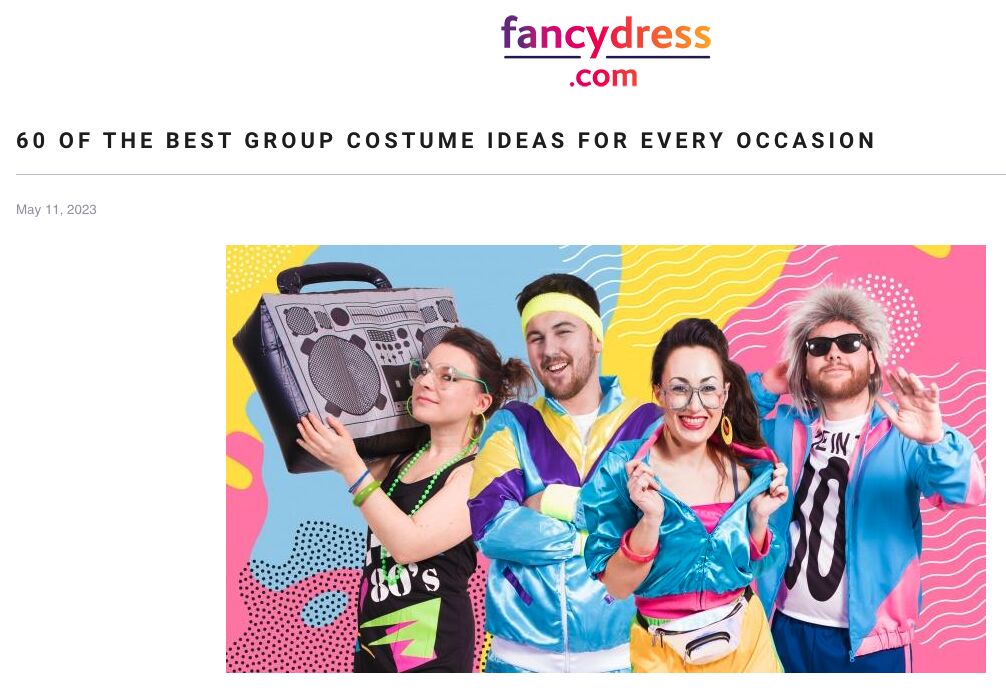
You can also compare features of your solution against each other. This can work well for SaaS businesses. For instance, consider a keyword like “best mobile banking app features.”

It’s not the lowest difficulty score but rankings are achievable for a banking brand with some authority behind it.
This is especially true when we consider that there’s only one post that’s loosely optimized for “best features” and a 403 post ranking in position three:
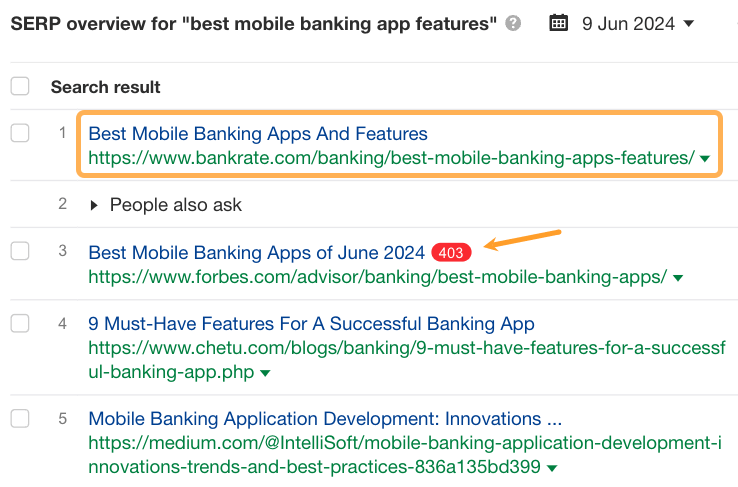
In either scenario, product vs. product or feature vs. feature, it’s about positioning your brand as the only option so that when readers become ready to buy, they choose you over a competitor.
2. Solution hijacking
One of my favorite MOFU content ideas is solution hijacking. It works by converting people who are already solution-aware… but for the wrong solution.
Your content should influence them to favor your product instead of the solution they already decided on.
For example, Freshbooks used this tactic to convert people using Excel for accounting and bookkeeping. It created many pages offering Excel-based solutions and templates but with calls to action to try out their tool for free.
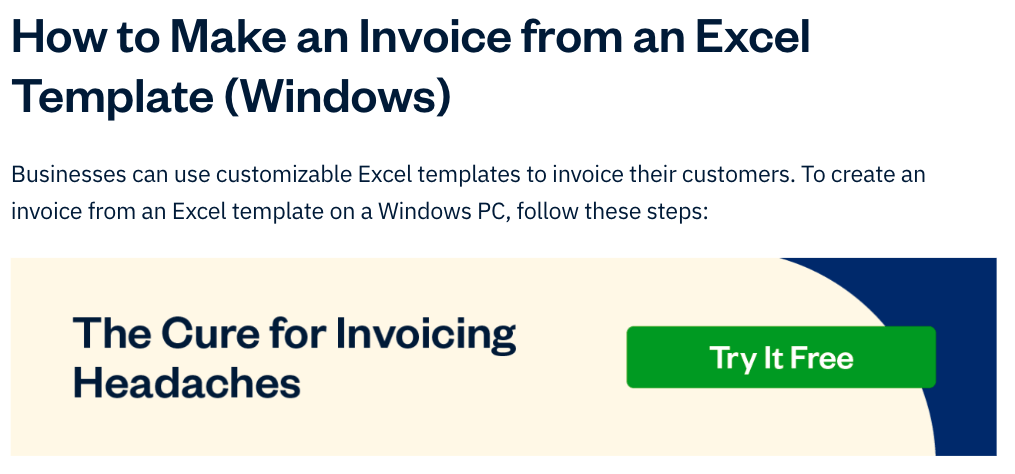
In total, these pages deliver around 6,400 monthly organic traffic sessions.

To try this out for your website, look for keywords that are about an alternative solution to yours but do not have a clear purchase intent (e.g., “excel invoice template” if you run a run accounting app). The intent bit is important, so don’t skip it.
If you’re unsure of a particular keyword’s intent, check out our AI-based “Identify Intents” feature. It will give you a percentage breakdown of the keyword’s dominant intents in the SERPs.
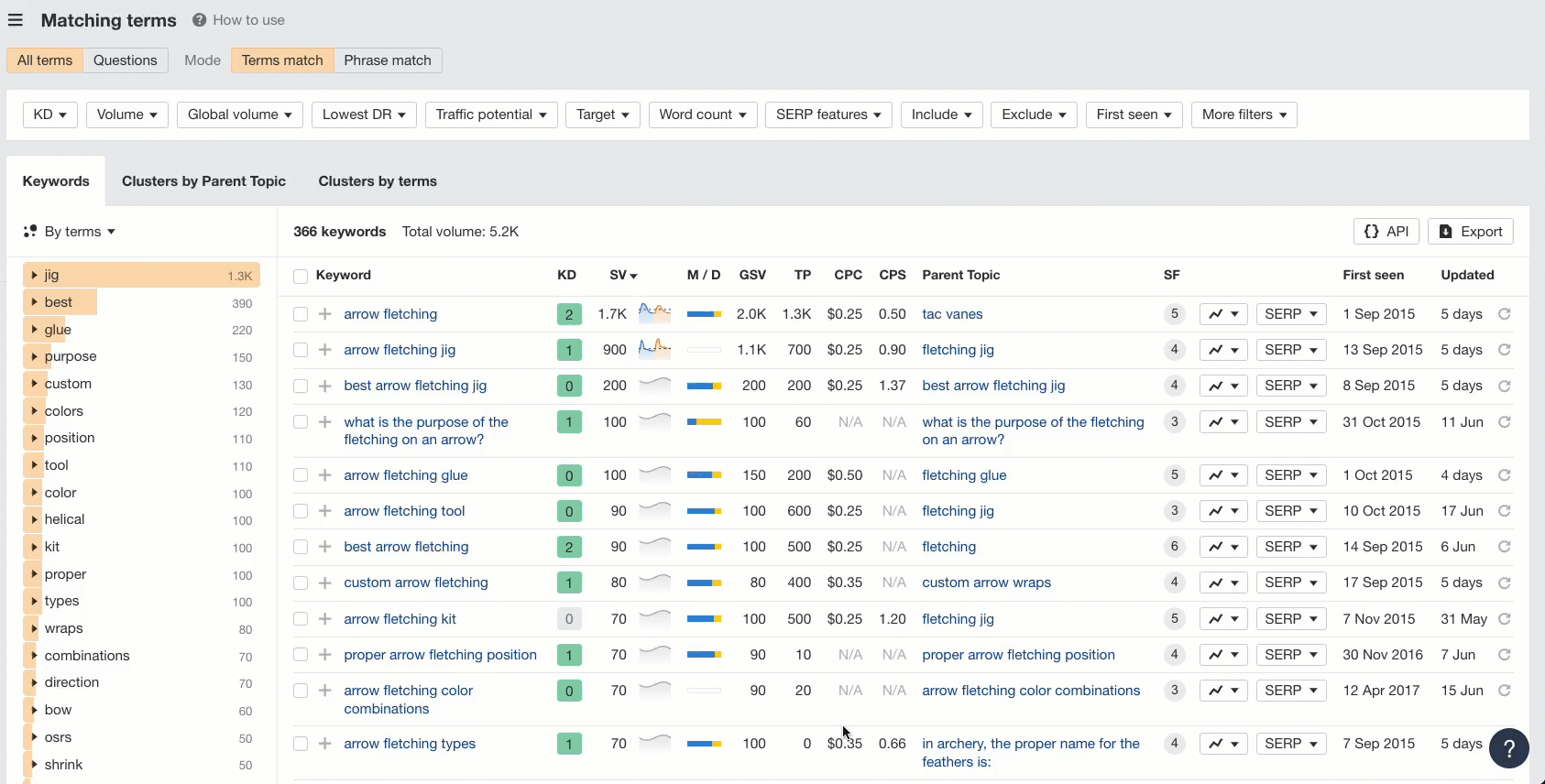
Here’s why intent is an important qualifier.
Let’s consider Purple. It sells hybrid mattresses but also once had the following pages for other mattress types on its website:

These URLs have since been redirected but the fact remains, they wrote about stuff they don’t sell.
At first glance, these pages seem like a decent example of solution hijacking. However, they target commercial intent keywords that are too far down the funnel.
For example, let’s look at the keyword “waterbed.” When you check out the SERP for it, it’s clear that Google treats this as a bottom-of-funnel keyword. Shopping results are at the very top of the screen, and 92% of results are targeted at searchers looking to buy waterbeds.
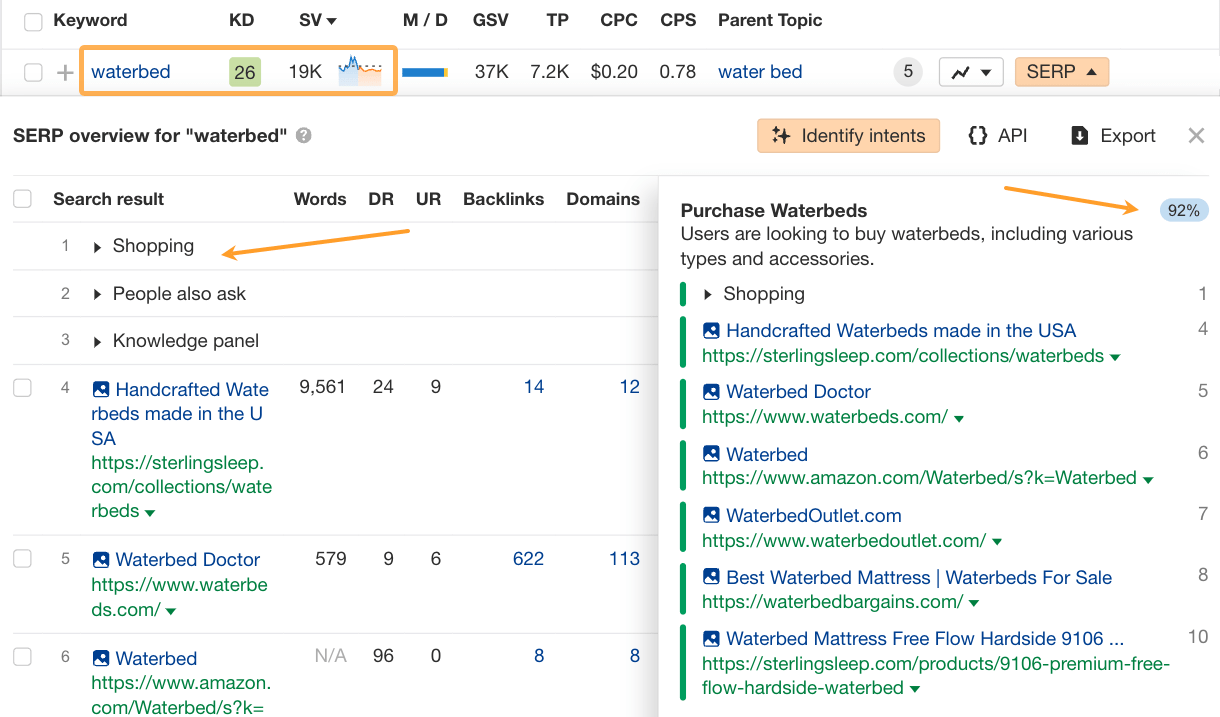
So, looking at the performance of these pages, including the new ones they now redirect to, there’s a big decline.
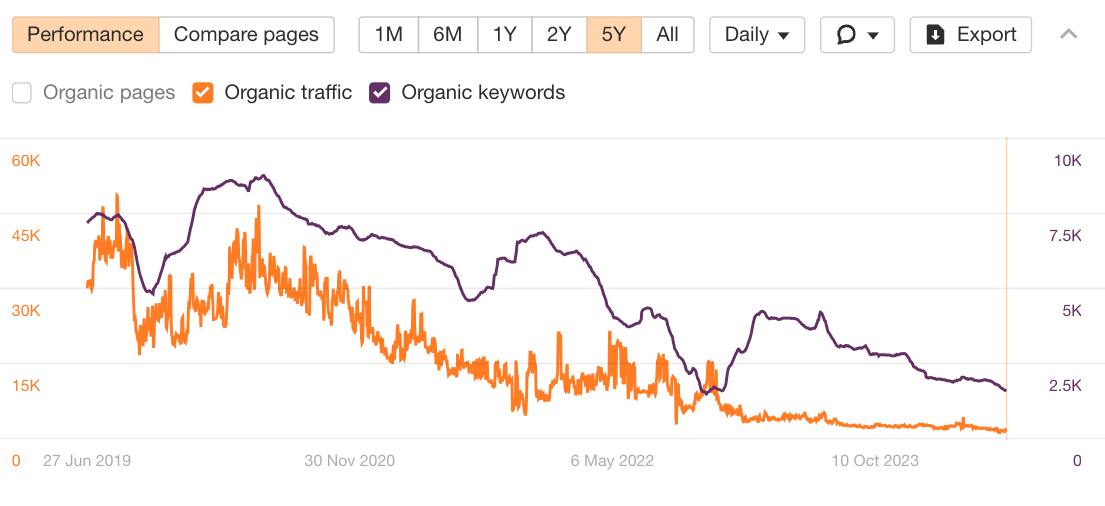
It’s unlikely Purple will be able to recover this traffic for these keywords unless it starts selling these types of mattresses.
Key takeaway: Find keywords for alternative solutions to what you offer. But make sure they don’t have such a strong purchase intent. Instead, you want to see a mixture of content types ranking, like a handful of blog posts and some product pages. That’s a decent opportunity to consider.
3. Quizzes
Quizzes are a type of interactive content that provides answers or recommends solutions to users based on their responses to specific questions.
Not all quizzes are part of the mid-funnel. For example, consider a skincare quiz.
It’s TOFU if it focuses on identifying your skin type. It’s MOFU if it recommends the perfect skincare routine for your skin type.
To find relevant opportunities, follow the same steps as above. Pop your main topic into Keywords Explorer, but this time filter for keywords including things like:
- Quiz
- Test
- What’s my…
- Find your…
- Finder
- Recommended
The few brands that do create quizzes usually don’t know how to optimize them for SEO. For example, the current top-ranking page for “skincare quiz” has fewer than 100 words of optimized content:

So optimizing the landing page is a very quick and easy win in most cases.
As for creating the quiz itself, there are so many no-code platforms, like Outgrow, that can make quiz-building a simple process. Or you can follow an infographic-style design, similar to this piece from Healthline.
Either way, quizzes can attract thousands of visitors monthly and help them decide which of your products to buy!

4. Niche calculators
Like quizzes, calculators are a great MOFU strategy that can often be created with no-code tools. They’re a great angle for MOFU content if the answer delivered by a calculator is essential for helping a searcher make a purchase decision.
Finding opportunities is straightforward, per the above process. But this time, filter for words like:
- Calculate
- Calculator
- Ratio
- How much
- Formula
- Estimate
- Estimator
It’s crazy just how underutilized this strategy is, especially by small businesses or niche websites.
For example, the keyword “neck injury settlement calculator” has all the makings of a great SEO opportunity:

- Very low difficulty score
- Very few links are needed to rank
- Loads of search volume, especially on mobile
- Projected increase in searches
- Traffic potential is about 6x the monthly search volume
- Aaaaand the top-ranking page is not well-optimized for this keyword
What a find!
If your calculator is helpful enough and provides a great user experience, you may not even need to create all that much supporting content or build many links to help it rank.
For example, let’s check out this flooring calculator:
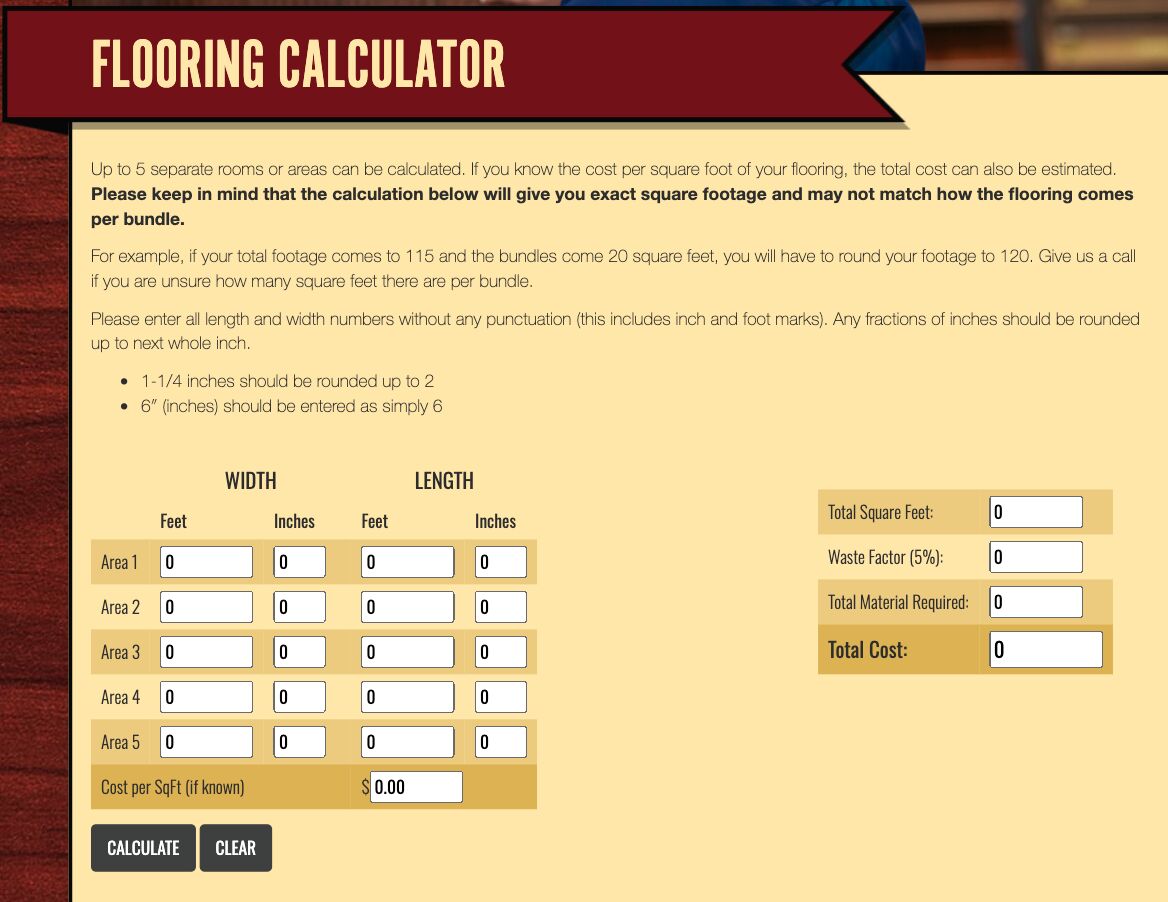
It’s simple, provides a great user experience, and is very helpful since you can calculate the floor space of multiple rooms in one go.
It also doesn’t have much content by traditional SEO standards (~100 words) or very many links (only 16) and yet, it brings in over 8,500 visitors a month.

A helpful calculator like this gets people one step closer to purchasing, which makes it a great MOFU content asset to consider. There are so many untapped opportunities worth looking into, even for small or niche businesses.
5. Scorecards
Scorecards are another type of interactive content designed to give the searcher a performance grade.
For example, they start by asking questions, similar to a quiz, but the goal isn’t to offer an immediate solution. It’s to provide a score that helps a searcher identify potential problems they may need to fix.
In other words, quizzes are great for developing solution-awareness, while scorecards are for people who may first need to develop problem-awareness and be eased into finding the right solution.
Unlike quizzes and calculators, which both have very obvious search patterns, there are more nuances for finding scorecard-related keywords. You often can’t filter for “scorecard” or similar. So try things like:
- Rate my
- How good is my
- How bad is my
- Checker
- Grader
Anything that indicates the user wants their performance rated will suit a scorecard.
For example, consider a keyword like “rate my resume”:
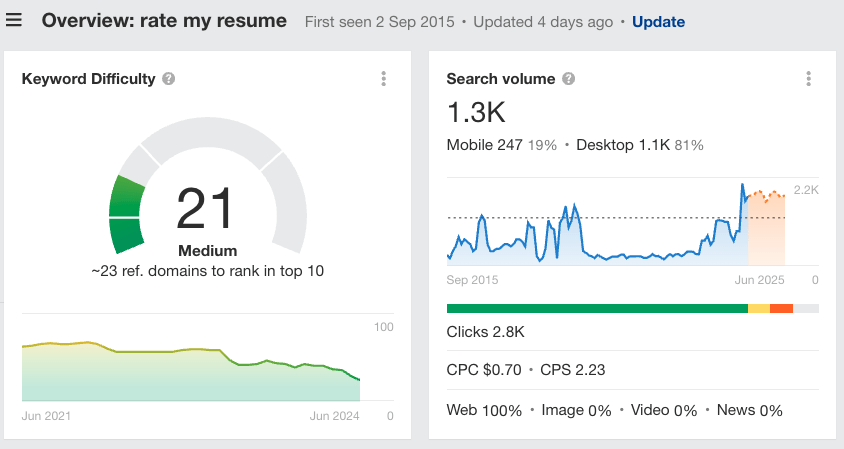
It’s a great MOFU asset for a resume-building SaaS company or a resume services marketplace.
If you have a PC-related ecommerce store, you could create a scorecard for “rate my PC” searches where you recommend better components or mods to improve the user’s current computer.
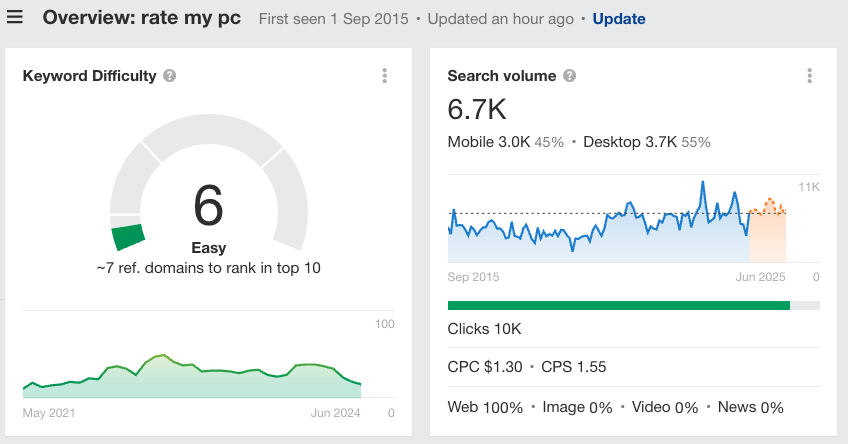
The opportunities are right there for the taking if you know where to look.
6. Alternative assets
It’s clear by now that content can take many forms. In many cases, the solution someone is looking for can’t be delivered in a blog post, social post, or audiovisual format.
That’s where alternative assets can be a great solution.
These are my favorite assets to create for most B2B SEO campaigns, especially if they’re in a small vertical with few TOFU or BOFU searches. The mid-funnel becomes very lucrative in such cases.
For example, you can consider alternative assets like spreadsheet templates for knowledge workers, CAD blocks for engineers, or wiring diagrams for electricians.
There are many ways to find these types of opportunities. You can start by filtering your keyword list for:
- Common file extensions in your industry, like .jpg, .svg, .png, .psd, or .ai for designers.
- Words like spreadsheet, diagram, file, or blueprint.
- Industry-specific software like Revit for engineers, Canva for designers, and so on.
For example, in a narrow B2B vertical like personal access door manufacturing, traditional keyword research techniques may not be enough. This is the entire list of keywords about the product, for instance:
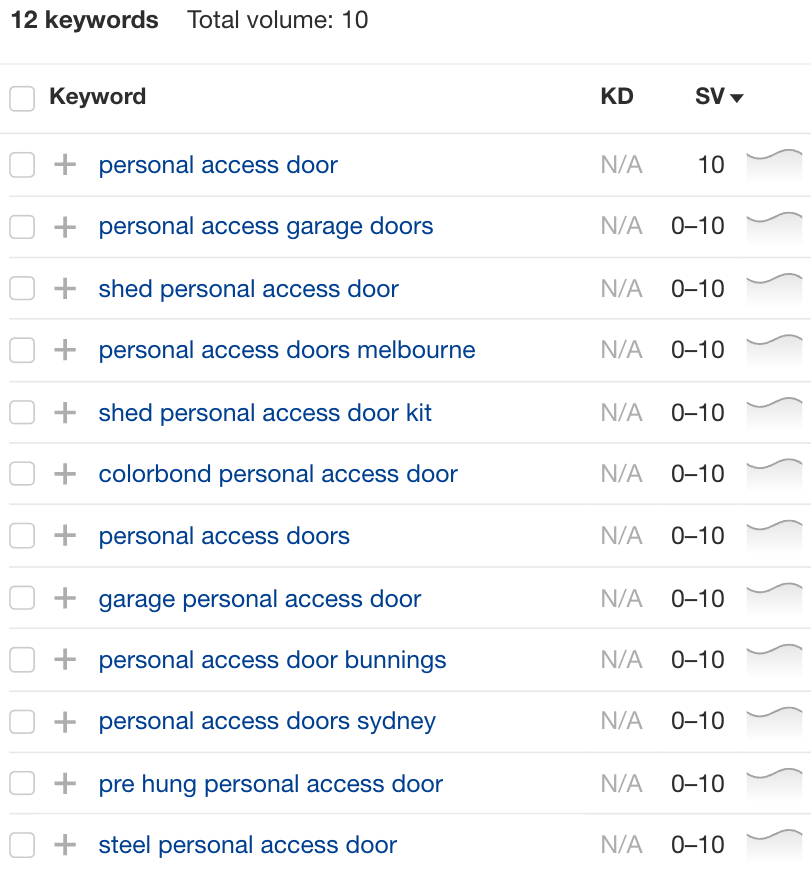
We can also forget TOFU blog posts. Answering questions like “what is a personal access door” that can now be handled by Google is often not worth the budget.
And that’s where creative thinking will be rewarded because, in this example, there’s a hidden goldmine of opportunity for CAD blocks and design files for builders and architects.
They often need CAD blocks for doors and surrounding elements like walls and windows.

Not only are there thousands of searches for stuff like this, but these are assets a door manufacturer probably already has on hand. And they may already share them with architects in their network anyway.
So why not optimize its site for such opportunities with the goal of connecting to more architects?
It’s all about solving your audience’s daily frustrations and building multiple touchpoints with them as you do so. When they’re ready to buy, they’ll likely think of you first before they even turn to Google.
Key takeaways
SEO opportunities have fundamentally changed and will continue to evolve as Google changes its interface.
With fewer clicks going to websites from top-of-funnel and bottom-of-funnel searches, there’s an untapped opportunity for SEO professionals to use the middle-of-the-funnel instead.
But, to do so takes far more creativity and out-of-the-box thinking, especially if you’re seeking opportunities your competitors haven’t yet considered!
If you have any examples of mid-funnel strategies that have worked wonders, feel free to share them with me on LinkedIn anytime.


Leave a Reply